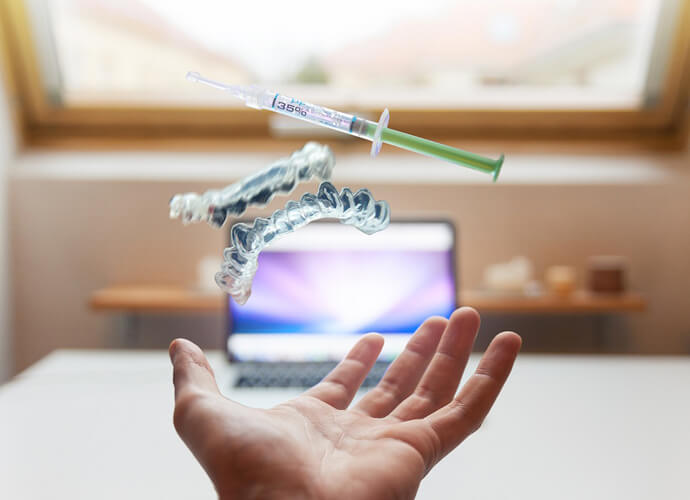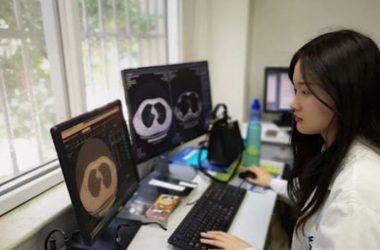Similarly, Predictive modeling in healthcare is capable of analyzing medical results of individual patients assessing historical data and predict the probability of a patient to get affected by a disease in the future by going through historical data and identifying a disease pattern by comparing the pathological results of a patient.
Data analytics in healthcare means doing certain functions through machine learning solutions, which physicians and clinicians were doing for long but with excellent precision and on a large scale. This technology enables physicians and clinicians to know about any potential medical threat to the patient before it happens, so they could take preemptive measures to decline the chances of possible ailment.
In the medical field, being one step ahead is essential because the lives of patients are on the stake and there is no time to waste, so if surgeons or physicians already know the potential threat to a patient’s life, they can make quick and valuable decisions in real-time to restrict the threats. This is how predictive analytics in healthcare is proving to be a fortune for the medical and healthcare domain. It can actually save the lives of patients because of its timely predictions and identification of potential ailment using machine learning as a service.
How We See Predictive Analytics in Healthcare 2020?
The healthcare domain has certainly turned their head toward predictive analytics and is trying to implement this technique in the treatment and other essential operations required in healthcare.
The capability of predictive analytics to estimate the probability of unforeseen medical threats has certainly helped physicians, surgeons, and clinicians a lot to stay one step ahead in medical treatment. This is why the use of predictive analytics is becoming an essential component of healthcare.
The year 2020 would see a massive rise in the use of predictive modeling in health sciences because of its efficiency and accuracy. The world has already started noticing the advantages of using this effective technology in the healthcare domain. Many medical research organizations are going hand in hand with tech organizations to advanced predictive analytics solutions in health care.
There is a lot of buzz and hype created for data analytics in healthcare, and rightly so, because of its effectiveness. People around the world are taking an interest in predictive analytics for the health care domain and want to know more about this technology.
Google trends also reflect the interest of people by showing stats of search queries from users residing in various parts of the world. The healthcare predictive analysis is a hot search topic on Google as you can see in the image given below:
Source: Google Trends
So, it is quite visible that this technology would be implemented in large numbers to make the lives of people safer.
Predictive Analytics in Healthcare Use Cases for 2020
Predictive Analytics has found multiple uses in the healthcare domain. To highlight its importance, we have picked some significant use cases of predictive analytics in healthcare. These use cases are being used in multiple healthcare facilities, and the popularity of these use cases would rise in the year 2020. These use cases are as follows:
Preventing Patients from Self-Harming
Some people get so depressed due to some reasons that they are more likely to attempt suicide or harm themselves. There could be a massive benefit if doctors and other healthcare staff somehow identify it early and start providing mental healthcare to patients with stress or suicidal thoughts to save them from hurting themselves.
Using electronic healthcare data, including mental health stats, suicidal attempts in the past, use of psychiatric medications, high depression scores, the predictive algorithms can identify the persons who are likely to attempt suicide or hurt themselves.
This is how healthcare predictive analytics is saving the lives of patients who are going through depression or mental trauma and process suicidal thoughts in their minds. These early notifications help physicians or healthcare professionals to take preemptive measures before any incident and save the lives of such patients.
Chronic diseases and Population Health Risk Scoring
Both the prediction and prevention work in close relation to each other. Healthcare facilities with the ability to identify individual patients with a high risk of developing chronic conditions when the disease is in its initial stages are more likely to help patients in avoiding health issues for a longer duration. Treating these chronic health issues in matured stages are more difficult to treat and can prove costly.
Predictive modeling imports and analyzes various types of data like lab test results, biometric data, claims data, Patient’s medical status, and social elements for health to create risk scores and identify the individuals who are more likely to get poor health outcomes. This helps healthcare providers in taking insights into the health of patients and avoid a probable complicated health outcome.
These predictive analytics also helps physicians in determining the needs of advanced healthcare efforts for particular individuals. This helps healthcare facilities to manage risks and improve proactive intervention of chronic diseases.
Avoiding Short-term Hospital Re-Admissions
Health-giving facilities are penalized under the law if a patient gets re-admitted in the hospital under 30 days of discharge from the facility. To handle this situation, a predictive analysis technique is applied to identify the patients who are likely to get re-admitted within the span of 30 days through assessment of risk factors of the patients.
This helps healthcare givers in enhancing the medical treatment of particular patients and extending their stay in the hospital to completely resolve the health issues with the patient and neutralize the likelihood of the same patient to get readmitted.
This also helps staff to focus resources for better care of the patient and designing a proper strategy for the discharge of the patients in such a way that it could prevent their early returns to the healthcare facility and avoid the risk of being subjected to penalties.
Taking Care of Patient Deterioration
Patients staying in the hospital face a variety of potential threats to their health. There is a probability of a patient developing a disease like sepsis, complicated infection, or a sudden downfall in their health because of existing medication during their stay in the hospital.
Predictive modeling could be useful in this kind of scenario to help medical caregivers to respond as soon as possible to alteration in patient’s wellbeing and become able to recognize a potential deterioration before the symptoms become visible.
The data analytics technique is an excellent fit for predicting clinical outcomes during the stay of the patient in the hospital. These outcomes may include acute kidney injury or sepsis. This ability of machine learning predictive algorithms could help considerably in reducing the death rates due to the deterioration of patients in the hospital.
Limiting the Appointment And No-shows
Some patients don’t come to the hospital for a checkup even after finalizing an appointment with a clinician. This type of unexpected gaps could ruin the whole workflow of healthcare facilities and stalls the chances for a checkup of other patients.
Recognizing the patients with the likelihood to skip the appointments without prior notice is possible through data analytics and computer vision. This could help in improving the consistent workflow of healthcare, providing the facility, decrease the losses in revenue, and the likelihood to check other patients in their spare time.
This also helps health providers for additional reminders to patients with a probability of No-show. The facility can also provide transportation and other services to enhance the workflow without any unforeseen gap.
Predicting Patterns for Patient Management
Predictive health analytics can also notify the staff of a health care facility about their busy schedule ahead. Hospitals have to go through multiple challenges, sometimes the number of patients become so massive that hospital resources and staff are not enough to fully manage the influx of patients.
If somehow, the providers get early notifications about the busy schedule ahead, they could manage the unexpected incoming of patients by getting additional resources and staff from other work shifts to handle the workload. This won’t only help providers but also the patients because of reduced waiting time. This would also help the healthcare staff to provide more care to the inpatients.
Managing Supply Chain
The supply chain is one of the costliest expenses for any healthcare facility. If this could be managed efficiently, it would help in reducing unnecessary spending. Predictive tools are a great help in this scenario. These predictive analytics would help in decreasing the number of variations, getting more information about ordering patterns, and proper utilization of supply.
Using predictive analytics to manage the supply chain would help executives to make proactive and data-driven decisions. These decisions would eventually help healthcare facilities to save up to $10 million yearly. This would also help in negotiating the prices and improving the order patterns.
Strong Data Security
Predictive analytics could also be anticipated to play an important role in cybersecurity. Analytics tools can be used to look over the data access, sharing, and utilization patterns would help healthcare organizations to recognize any potential threat to their data and limit the activity of any intruder.
This could be a significant step towards the protection of healthcare and other types of data, which could be vital for the routine working of health organizations. The deployment of these solutions for defense of data in healthcare organization leave minimal chances of cyber-attacks because this cyber defense system becomes way beyond the capability of average hackers.
Development of Precision Medicine and New Therapies
Predictive analysis is also proving to be a handful in supplementing traditional clinical trials and drug research techniques. The new method of testing named “In Silico” testing is proving to be an efficient technique, which helps in avoiding multiple complications. It also declines the need for recruitment of patients for the complicated and expensive clinical trials.
With the help of machine learning, modeling and simulations methods could be devised to incorporate characteristics of physiology and genetics in enzymes used for drug-metabolizing processes. This process can be further used to identify various patients that require dose adjustments, whether it needs to be increased or decreased.
This is how clinical decision support tools and predictive analytics in healthcare are playing an essential role in transforming newly introduced or discovered drugs into precision medication or therapy.
A Mean for Patient Engagement and Satisfaction
Although predictive analytics have found multiple uses in the healthcare domain, the main goal is to create a comfortable environment in healthcare facilities for various types of patients. Consumer relationship management and cognitive services plays a crucial role in the satisfaction of consumers. Patients as consumers of healthcare facilities should be engaged in all the aspects of their health recovery process in the hospital.
The main goal is to design a service-oriented, and consumer-oriented working environment that could work better for patients and providers. Profiles of individual patients are created through data analytics tools to improvise the customized healthcare services and devise treatment strategies for individual patients for their well-being.
ATM Cash Forecasting for Patients
Predictive analytics is being used to analyze the patterns of atm cash withdrawal on hospital premises. ATM Cash forecasting could also be applied in healthcare facilities to ensure there is continuous availability of cash for patients admitted to the hospital in case they need it.
This would also help in minimizing the out of stock and overflow situations. This would not only benefit the patients but healthcare organizations as well.
Customer Churn Prediction for Predictive Modeling in Healthcare
This solution could be really beneficial to create a great bond between the consumers and providers in the healthcare domain. This solution could be applied to identify the behavior of consumers and serving or responding to them accordingly.
The churn prediction solution posses the capability of judging the mental state and behavior of consumers and handling their issues in accordance with their behavior to provide better and enhanced services. This solution could be deployed to focus on delivering enhanced services to the individual patients according to their behavior and mental state.
Predictive analytics in Healthcare- More Examples
There are various other uses of predictive analytics in the healthcare industry to enhance the working of health care facilities, some of these uses are listed below:
- Analyzing medical images efficiently
- Reducing risk chances in prescription
- Improving the accuracy of diagnostics
- Identifying the cure of potentially lethal diseases
- Enhancing patient’s safety in ICU
- Devising multiple treatment plans with detailed costs
- Usage of speech to text software for all in-house video training.
There are various other uses of predictive modeling for the healthcare industry, but we have listed some of the significant ones here. The year 2020 would see a huge rise in the use of healthcare predictive analytics.
FAQs Regarding Healthcare Predictive Analytics
How is predictive analytics used in healthcare?
Predictive analytics in healthcare is used to manage chronic disease risks, reduce waiting times, precision medicine, enhanced data security, and for various other purposes.
How does IoT improve predictive analytics in healthcare with more data?
The IoT-powered devices help in collecting and storing a massive amount of additional healthcare data, which could be further analyzed the predictive analytics for better working. This is how IoT improves predictive modeling in healthcare with more data.
Why is predictive analytics important in healthcare?
Since healthcare is a serious industry with multiple lives on stake, even the smallest errors could be a reason for the loss of a number of lives. The predictive analytics helps in reducing the chances of error and thus proves to be a handful in saving lives. Therefore, it plays a very important role in healthcare.
What are the downsides to predictive analytics in healthcare?
The downsides to predictive analytics in healthcare are limitations of deployed solutions due to advancements in technology and impacts on decision processing, moral threats and any error due to human interventions with automated systems, and lack of regulations and biases of algorithms.
Start Gowing with Folio3 AI Today
We are the Pioneers in the Cognitive Arena – Do you want to become a pioneer yourself?
Please feel free to reach out to us, if you have any questions. In case you need any help with development, installation, integration, up-gradation and customization of your Business Solutions. We have expertise in Deep learning, Computer Vision, Predictive learning, CNN, HOG and NLP.
Connect with us for more information at [email protected]









